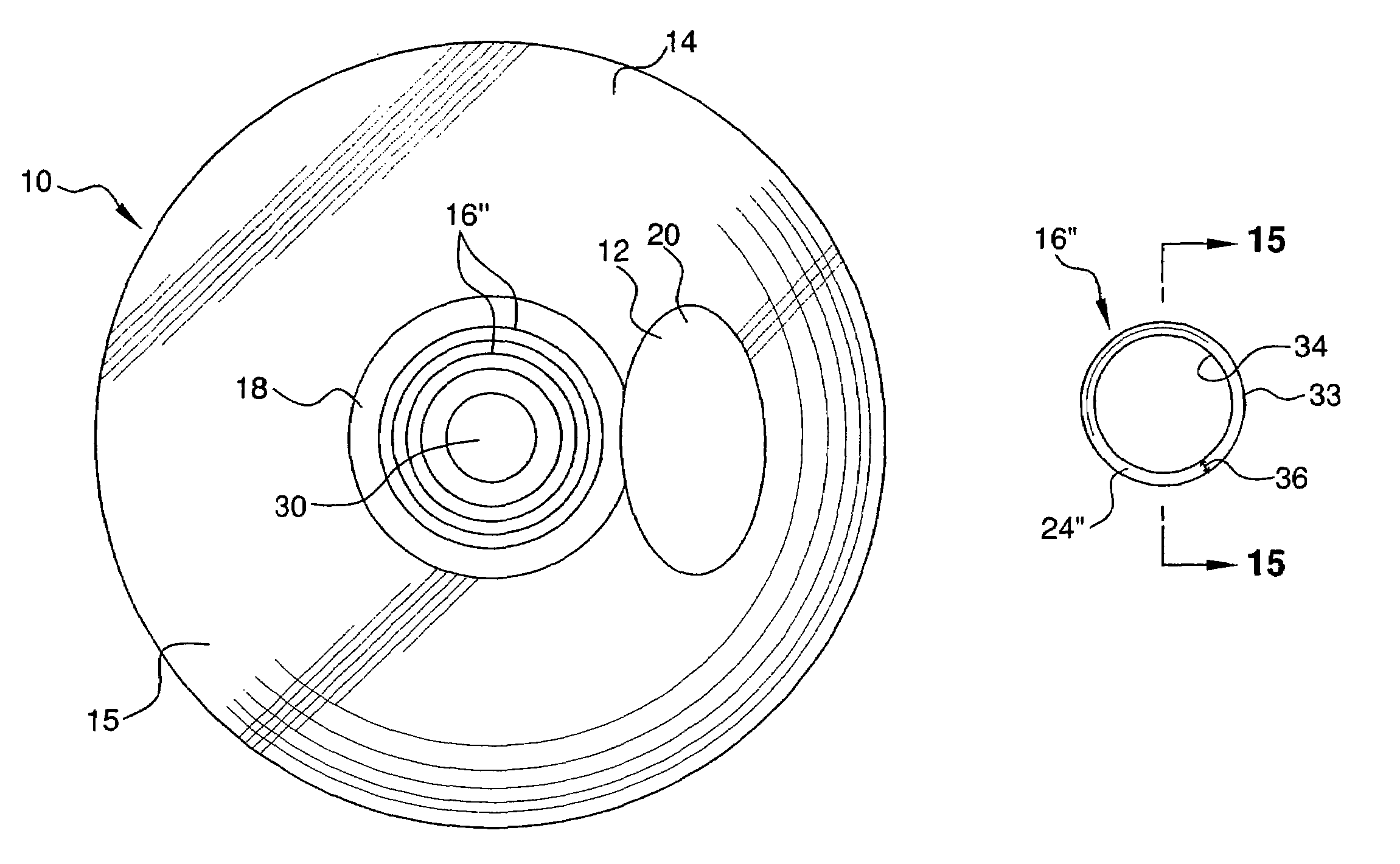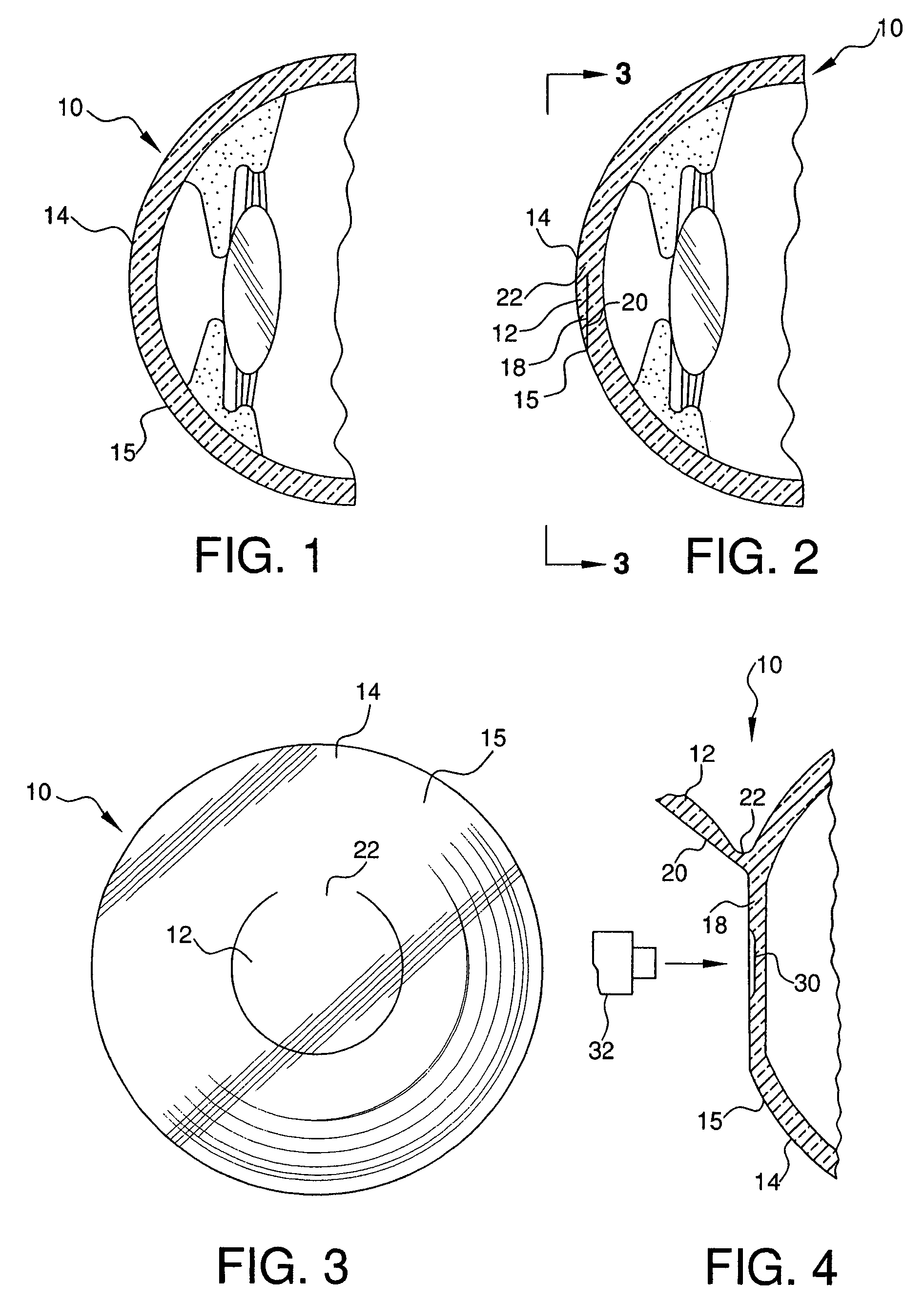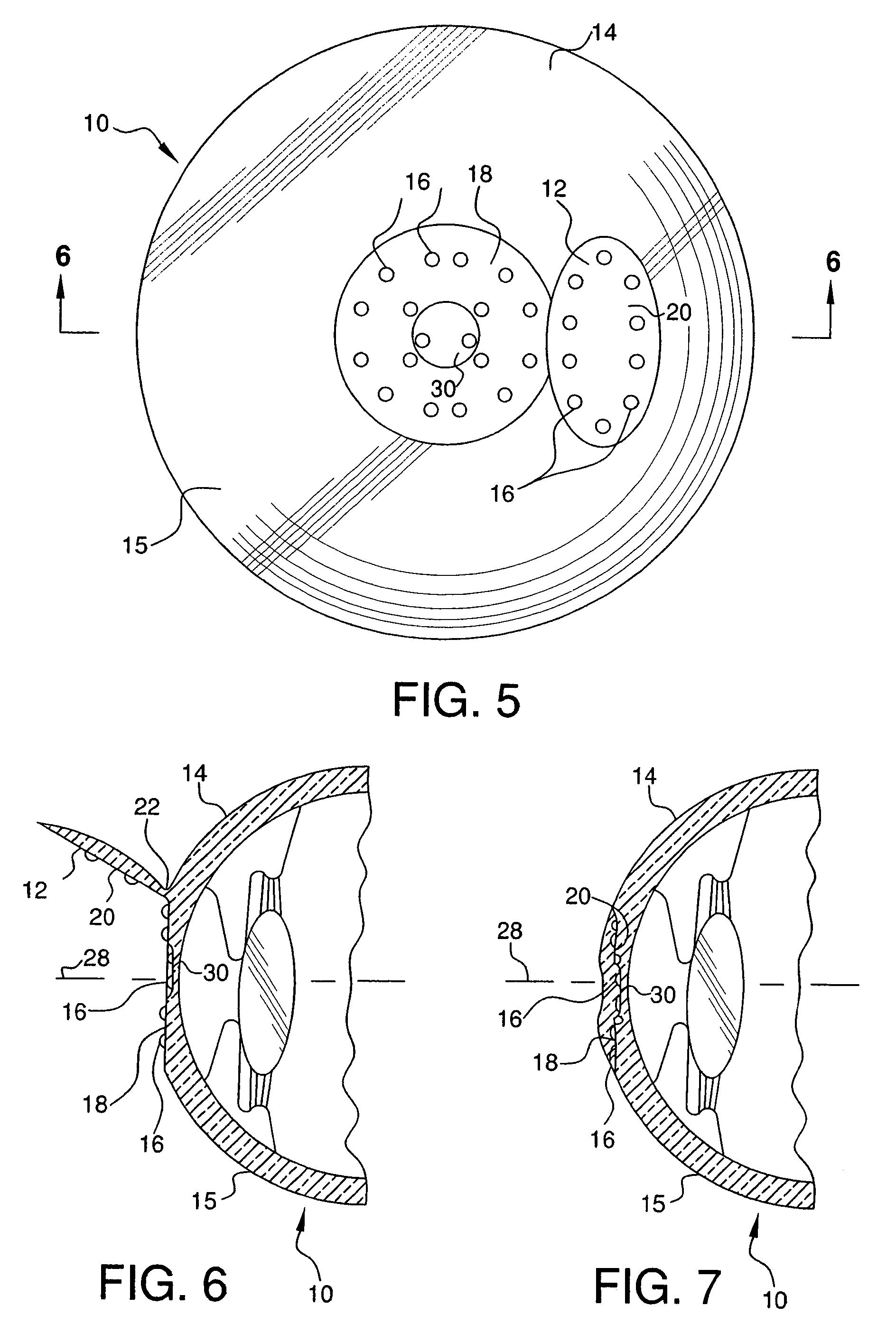Method for producing a multifocal corneal surface using intracorneal microscopic lenses
- Summary
- Abstract
- Description
- Claims
- Application Information
AI Technical Summary
Benefits of technology
Problems solved by technology
Method used
Image
Examples
Embodiment Construction
[0035]As seen in FIGS. 1–7, the refractive properties of eye 10 can be altered by creating a corneal flap 12 in the cornea 14, ablating the cornea to reshape the cornea and the external surface 15 of the cornea, and then placing multiple microscopic lenses or inlays 16 under flap 12.
[0036]To begin, the refractive error in the eye is measured using wavefront technology, or any other measurement device desired, as is known to one of ordinary skill in the art. For a more complete description of wavefront technology see U.S. Pat. No. 6,086,204 to Magnate, the entire contents of which is incorporated herein by reference. The refractive error measurements are then used to determine the proper correction necessary. For example, the information from the wavefront technology determines the proper portions of the cornea of the eye to be ablated, if necessary, and the proper power of the lenses 16 and / or the number of the lenses 16 to be implanted.
[0037]As seen in FIGS. 2 and 3, flap 12 is cre...
PUM
 Login to View More
Login to View More Abstract
Description
Claims
Application Information
 Login to View More
Login to View More - R&D
- Intellectual Property
- Life Sciences
- Materials
- Tech Scout
- Unparalleled Data Quality
- Higher Quality Content
- 60% Fewer Hallucinations
Browse by: Latest US Patents, China's latest patents, Technical Efficacy Thesaurus, Application Domain, Technology Topic, Popular Technical Reports.
© 2025 PatSnap. All rights reserved.Legal|Privacy policy|Modern Slavery Act Transparency Statement|Sitemap|About US| Contact US: help@patsnap.com



